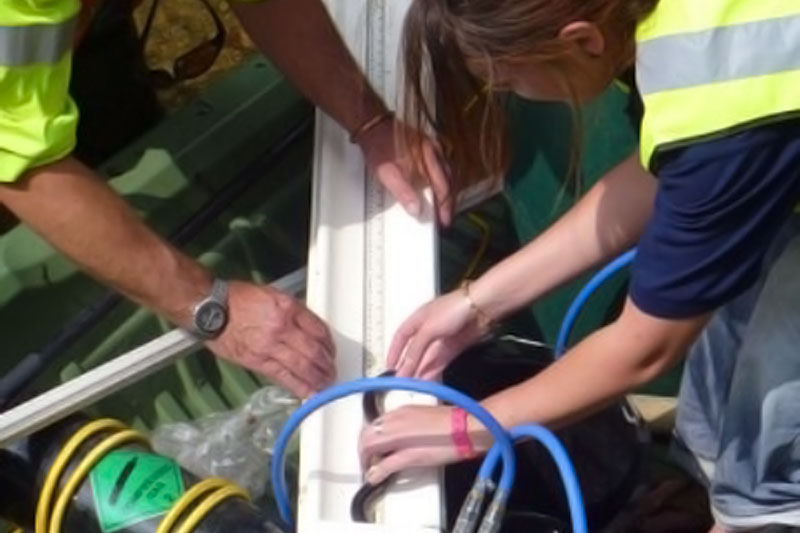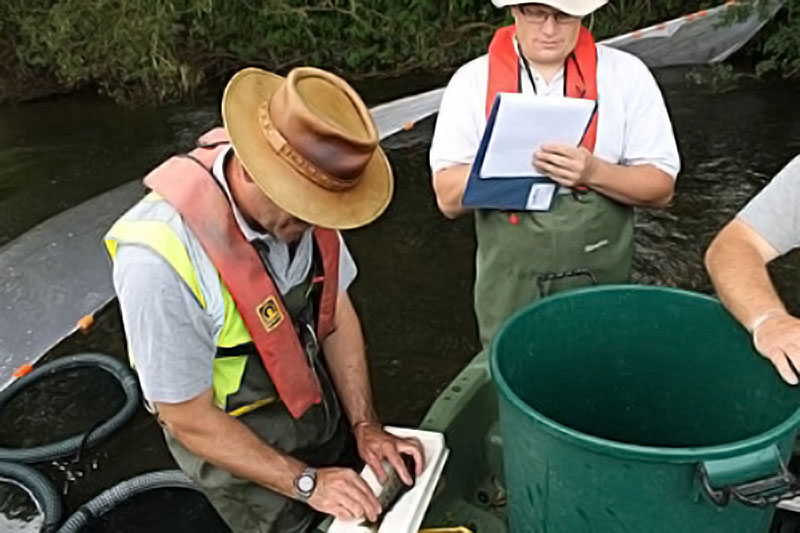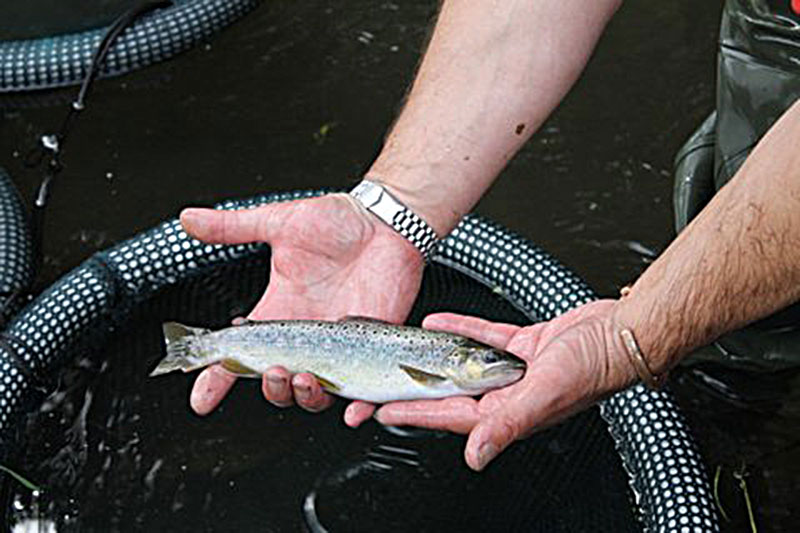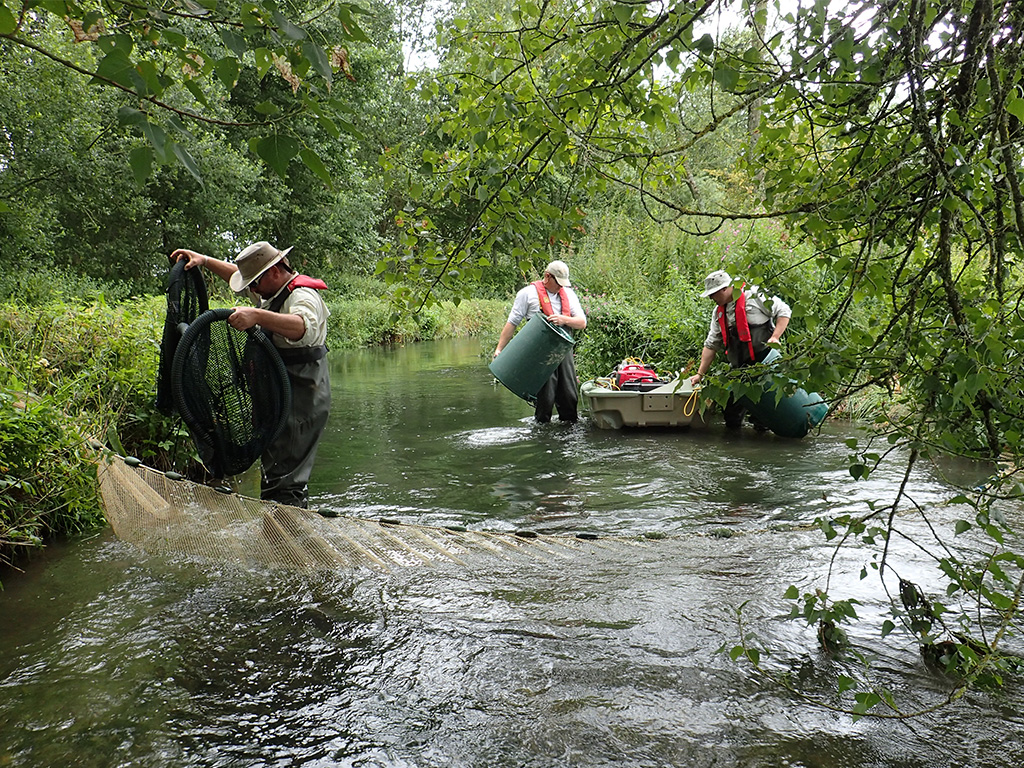Quantitative electric fishing is a multiple-catch-depletion electro-fishing technique, and is our preferred method, as it provides more robust biomass and density estimates.
The survey site is sectioned off with stop nets as in the semi-quantitative method, but is electro-fished at least three times, rather than just once. The fish caught in each run are held separately, and the total population can then be estimated by the reduction in numbers between consecutive runs.
As with semi quantitative surveys, shallow sites are waded in an upstream direction, while larger deeper sites are fished using an inflatable dinghy in a downstream direction, from one stop net to the other.
On completion of each run the fork lengths are taken of all species, excluding minor species, which are recorded by log abundance. Population densities are then calculated using a Maximum Weighted Likelihood method to produce a population estimate for each species, with an associated standard error.




